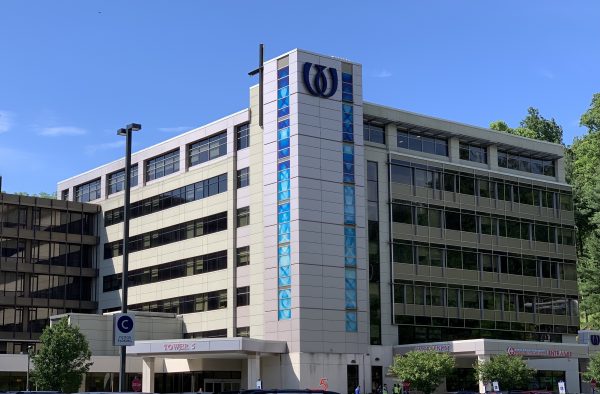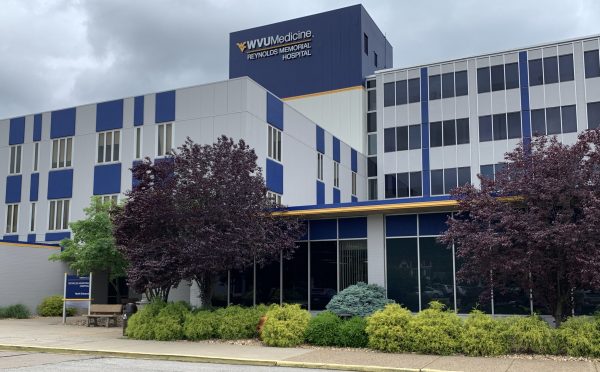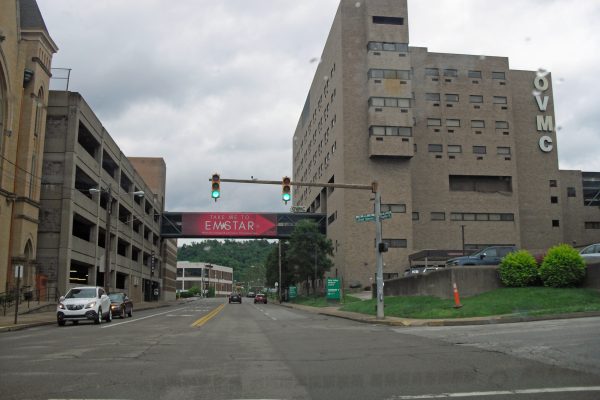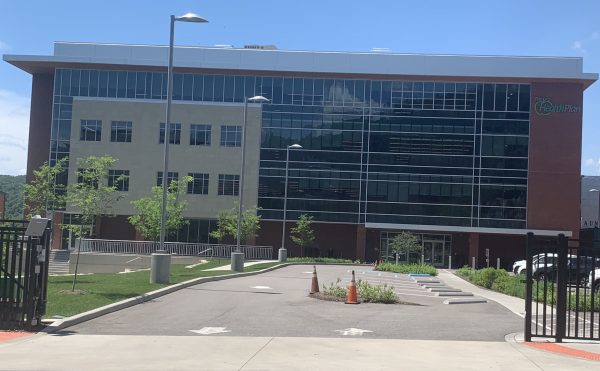Sorting out what’s happening among Wheeling’s two long-time hospital challengers and a new, shockingly broad-shouldered player on the field is tough to do.
Even for the experts.
One state-level insider from the health care industry actually snorted when asked about the intensity of the competition around the Mountain State and in Ohio County — where Ohio Valley Medical Center (OVMC), West Virginia University Health System (WVU Health System) and Wheeling Hospital are going head to head.
“Game of Thrones,” he said off the record, in a reference to a fantasy TV drama featuring blood-sport-level competition. “That would be an apt description.”
He’s not alone in trying to stay out of the fray. Multiple agencies — government/regulatory side and representational/lobbying side and business — declined to comment for this article.

But, two industry spokespersons — one who represents hospital interests and one who promotes greater access to health care — were willing to share their perspectives with Weelunk. Here is what they had to say:
ALL ‘SYSTEMS’ GO
The current competition among local hospitals is merely a symptom of a bigger shift in health care, according to Joe Letnaunchyn, president and CEO of the West Virginia Hospital Association.
That association is a dues-funded agency that represents the interests of 64 hospitals and health systems, including OVMC, Wheeling Hospital and WVU Health System. (The latter is now operating locally as Reynolds Memorial Hospital in Marshall County, WVU Heart and Vascular Institute at The Highlands and The Health Plan insurance company in downtown Wheeling. As of this weekend, WVU Health System is also in a management/clinical agreement across the Ohio border at Barnesville Hospital.)
Letnaunchyn pointed to a recent change of events in Huntington, the seat of Cabell County. There, fierce rivals St. Mary’s Medical Center and Cabell Huntington Hospital were once duking it out in TV ads that dominated the airwaves during local news hours. He said out-of-town visitors no doubt wondered what kind of weirdness was going on.
But, financial realities and other changes of circumstance eventually forced a truce.
“They went from competitors to collaborators,” Letnaunchyn said of the two campuses, which operate a mere two miles apart. “It took some time, but now you’re seeing a system forming, and their intention is to grow.”
And, the key word in that statement is “system.”
“I think that’s the direction we’re going,” Letnaunchyn said of a national and statewide trend.
Hospitals, clinics and even physicians who were previously in private practice are linking arms and pocketbooks to operate cost effectively. And, he suspects the systems will grow ever bigger.
He noted some business colleagues outside health care have noticed and commented on the changes. They predict every health care facility in the state will eventually be under the umbrella of a half dozen systems.
WVU Health System seems destined to be among the victors. Already operating in nearly every county of the state (through both hospitals and branches of specialty “institutes”), WVU is the largest such system and will likely grow larger, he said.
Letnaunchyn specifically sees the addition of more hospitals on the horizon for WVU Health System. Indeed, between the time of his interview and this posting, that system announced its new relationship with Barnesville Hospital.
Joining a system can be particularly attractive to small hospitals, such as Barnesville and Reynolds Memorial, which are having an even tougher time than larger ones in making the income from patient services stretch to meet actual expenses, he said. He noted that about 70-75 percent of West Virginians are insured through government payers such as Medicare, Medicaid and PEIA, whose pre-set payments do not necessarily meet a hospital’s actual costs.

For a small hospital, which also has less access to expensive pieces of equipment, this can spell real financial trouble.
“This state is very rural,” he noted of tiny hospitals stabilizing local patients only to ship them off to larger ones for actual treatment. “That’s our blessing and a curse. You have the beauty … but you also have the challenges.”
Economy of scale isn’t the only challenge, he added. Efficiency of management is also a huge driver of the system model in West Virginia.
“We’re a very sick state,” Letnaunchyn said. “We have a lot of chronic conditions. … When you can keep that patient within your system — I don’t mean selfishly, but clinically — you can meet that patient’s needs.”
As an example, he brought up patients who have chronic conditions such as those linked to obesity or smoking. One person might have diabetes, heart disease and lung disease.
“Just from a medication perspective, you have to make sure you’re not complicating the person’s … situation,” he said.
LOCATION, LOCATION, LOCATION
Debrin Jenkins, executive director of the West Virginia Rural Health Association, can agree with that.
Her non-profit group — which she runs out of her home — advocates for universal access to quality health care. She sees the shift to systems as a potential way to get that and keep it.
“For the last 20 or 30 years, hospitals have been dying on the vine, especially rural hospitals,” Jenkins said.
West Virginia has been fortunate to have not seen rampant closures, but small/rural hospitals are feeling the pinch and she doesn’t want to press that luck. “If people don’t have access, they don’t get treated.”
When WVU Health System comes into town with a clinic or an institute, it’s a game changer for patients, she said. The treatment residents used to have to drive to get is suddenly right there.
There is a local example of this pattern. When WVU Health System took over Reynolds Memorial in Marshall County, a shuttered birthing center was re-opened. That small hospital also now offers expanded cardiac and vascular services.
“The negative part (of larger systems) is that hospitals will have to compete more,” Jenkins said of this sudden expansion of services.

INSIDE AND OUTSIDE
While the jockeying for patients may be highly visible, Jenkins noted that the move to health care systems is also playing out deep inside the industry.
Ironically, she noted the increased access allowed by systems is interacting with new access brought on by the Affordable Care Act (Obamacare). She linked the latter to 184,000 newly insured people in the Mountain State alone. Many of these are insured for the first time in their lives.
Smaller hospitals that were already stressed are now seeing a huge influx of new emergency-room patients with under-paying Medicaid insurance, she said. This has particularly been true in communities that don’t have a “doc in a box” urgent-care center.
“Their belief (when they had to pay everything out of pocket) was you don’t go to the doctor unless you’re dead,” Jenkins said. “(But now, with Medicaid) you go to ER for strep throat or to get stitches removed.”
With the cooperation of the state Legislature, her association did a pilot study to figure out what the problems were. The study of two rural hospitals found a huge number of ER visits were inappropriate —linked to drug seeking, minor ailments, mental illness or a desire for social stimulation rather than actual medical emergencies.
An even closer look revealed that, in one year, 172 individuals visited the two ERs 3,500 times — at a cost of $24 million.
Now, in Kanawha County, that data is already being applied. Instead of flinging open the ER doors in unlimited access, paramedics have been trained to assess situations for transport need and are paid for their services whether or not there is an ER transport, which they previously were not.
“They have saved a huge amount of money doing it,” she said of initial success.
And, this is important data as the system model evolves, she said. Good access and good business go hand in hand.
“Hospitals can get a financial demerit (from various insurance payers) if a person comes back to an ER within 30 days for the same thing.” Systems are going to require moving away from pay for each visit, regardless of the number of visits, to hospitals being compensated for actually taking care of the problem.
Giving a heads up on another change that’s likely going to rock the system any day now, Jenkins said it is a sobering fact that the median age of doctors and nurses in the state is now 49 or 50. “They’re dropping like flies — retiring, whatever,” she said. “We have a crisis coming at us. It’s a slow-moving tidal wave.”
Her group also works to keep medical professionals who are training in the state to later work in the state.
Systems or no, Jenkins said the most important thing is that a hospital has the financial wherewithal to be there and be operating well when you need it.
“We want to make decisions based on data, not who’s screaming the loudest or what the sexiest thing is at the moment.”
A QUICK OVERVIEW
Area hospitals have undergone everything from ownership changes to non-profit-to-for-profit flips in just the last handful of years. Here is a quick overview of what has happened recently:
Ohio Valley Medical Center (OVMC)
-
- Alecto Healthcare Services purchased the financially struggling OVMC and the nearby East Ohio Regional Hospital in 2017, bringing with it a change to for-profit business operation and the layoff of 70 workers (about 5-6 percent of the combined 1,200-person workforce). Alecto, based in Irvine, California, also owns Fairmont Regional Medical Center in Marion County.
- In an effort to keep the 1890-founded OVMC viable, the city agreed to pay $3 million in capital repairs and demolition at the downtown site during Alecto purchase negotiations.
- Many physicians working with OVMC are now employees of the 200-bed hospital rather than private practitioners.
- Alecto’s past hospital-turnaround strategies have not been without controversy, however. Examples included a $30 million lawsuit in 2017 by a previous California holding (Antelope Valley Hospital) for, “egregious malfeasance and/or outright fraud,” in its “cost-cutting” management practices. Alecto CEO Lex Reddy, former CEO of Prime Healthcare Services, was linked to legal controversy at that latter organization, as well. The federal government accused Prime of driving up revenue by pressuring physicians to admit more patients, particularly those on Medicare.
Information is from OVMC’s website and Becker’s Hospital Review e-magazine.
Wheeling Hospital
-
- This hospital, founded in 1850, has a small system of its own. It now includes the 247-bed main hospital, a new seven-story tower that houses a 23,000 square-foot emergency/trauma center, a continuous-care center, a renal-care center, a wellness center and four medical office buildings. It is affiliated, as well, with Wheeling Clinic and five outlying health centers in Brooke County and Ohio. It employs 275 physicians.
- The only area hospital with a religious affiliation — Roman Catholic — well-wishers can access a “send a prayer” button on its website.
- Wheeling Hospital’s business practices are also linked to controversy. Louis Longo, the hospital’s former executive vice president, filed a whistleblower lawsuit against the hospital in late 2017. His suit, which was joined early this year by the U.S. Department of Justice, alleges the hospital offered illegal kickbacks to employee and contract physicians based on the volume and financial value of patient referrals for in-house testing. The hospital recently filed a federal-level countersuit, accusing Longo of breach of fiduciary duty and abuse of process. Hospital CEO Ron Violi resigned in late May.
Information is from Wheeling Hospital’s website and the U.S. Department of Justice.

West Virginia University Health System (WVU Health System)
-
- WVU’s system operates locally through Reynolds Memorial Hospital in Marshall County, the Health Plan insurance company in downtown Wheeling, and WVU Heart and Vascular Center at the Highlands. As of Saturday, it is also in a managerial/clinical agreement with Barnesville Hospital just across the river in Ohio.
- The largest health system in the state, WVU operates nine hospitals in West Virginia, five institutes that have branches in nearly every county (the WVU Heart and Vascular Institute at the Highlands being among these) and a resort-style diagnostic clinic at The Greenbrier. It also operates clinics just outside state borders in Virginia, Pennsylvania and Maryland and the 25-bed Barnesville Hospital in Ohio.
- In 2018 (whose annual report does not include the recent acquisitions of The Health Plan or Barnesville Hospital), the system had more than 18,000 employees and 1,657 beds and did about 63,000 in- and out-patient surgeries and 6 million lab services.
- In recent weeks, WVU’s system also entered new territory with the purchase of Wheeling-based The Health Plan. That insurance company/managed-care organization covers patients throughout the state and elsewhere, including those seeking services from hospitals that are not part of the WVU system. Off the record, one OVMC physician expressed concern to Weelunk that such hospitals could become “out of network.” WVU Health System has publically stated it will continue to support broad access for The Health Plan clients.
Information is from WVU Health System’s website.
• A long-time journalist, Nora Edinger also blogs at noraedinger.com and Facebook and writes books. Her Christian chick lit and faith-related non-fiction are available on Amazon. She lives in Wheeling, where she is part of a three-generation, two-species household.


